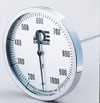Toll-Free in Malaysia:
1800 88 3496
International+65 6415 5353
 Thermocouple Temperature Measurement Sensors
Thermocouple Temperature Measurement Sensors
 Resistance Temperature Devices(RTD)
Resistance Temperature Devices(RTD)
 Infrared Temperature Measurement Devices
Infrared Temperature Measurement Devices
 Bimetallic Temperature Measurement Devices
Bimetallic Temperature Measurement Devices
 Fluid-Expansion Temperature Measurement Devices
Fluid-Expansion Temperature Measurement Devices
 Change-of-State Temperature Measurement Devices
Change-of-State Temperature Measurement Devices

↓ View this page in another language or region ↓
 Medición de Temperatura
Medición de Temperatura
 Medición de Temperatura
Medición de Temperatura
 Temperature Measurement
Temperature Measurement
 Temperaturmåling
Temperaturmåling
 Introduction à la mesure de température
Introduction à la mesure de température
 Temperaturmessung
Temperaturmessung
 Temperature Measurement
Temperature Measurement
 Sensor de temperatura
Sensor de temperatura
 Temperature Measurement
Temperature Measurement
 Temperature Measurement
Temperature Measurement
 温度測定
温度測定
 Temperature Measurement
Temperature Measurement
 温度测量
温度测量
 온도 측정
온도 측정
 Temperature Measurement
Temperature Measurement
 Temperature Measurement
Temperature Measurement
 Temperature Measurement
Temperature Measurement
 Temperature Measurement
Temperature Measurement
 Temperature Measurement
Temperature Measurement